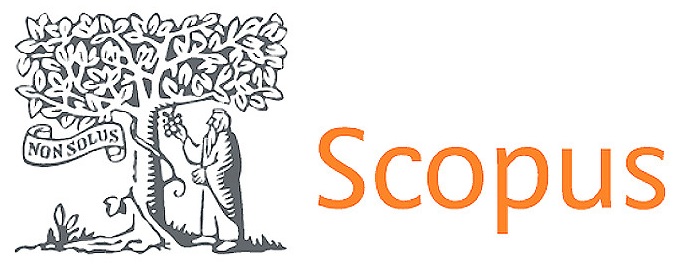Developing AI-Powered Prosthetics for Enhanced Mobility and Real-Time Neural Control in Patients
DOI:
https://doi.org/10.56294/mw2024520Keywords:
Artificial Intelligence, Prosthetic Limbs, Neural Control, Machine Learning, Sensory FeedbackAbstract
The creation of mechanical devices driven by artificial intelligence (AI) is a huge step forward in rehabilitative medicine. These devices will make it easier for people who have lost limbs to move around and give them real-time brain control. This study paper looks into how AI technologies can be used in artificial limbs to make the user experience smooth and natural. Machine learning techniques are at the heart of our method because they read neural data straight from the user's nervous system. This lets the device react in real time to the user's free muscle movements. The study is mostly about making brain connections that pick up electrophysiological signals. These signals are then handled by advanced AI models to figure out what movements are meant to happen. After that, the artificial arms make these moves with a level of accuracy and response that is very close to how real limbs work. We also talk about the creation of feedback loops that let people get sense information from the device, which improves their ability to feel touch and body space. Our method uses a diverse approach that combines robots, neuroscience, and biotech. AI is the key that connects these fields into a system that works well together. Preliminary tests have shown that speed and accuracy of artificial control have gotten a lot better, making it much easier on users' bodies and minds. Also, patient feedback shows that the device is more comfortable and easy to use, which suggests that it has a higher chance of being adopted. This study not only pushes the limits of medical engineering, but it also shows promise for helping amputees regain their freedom and quality of life.
References
Ornaghi, H.L., Jr.; Monticeli, F.M.; Agnol, L.D. A Review on Polymers for Biomedical Applications on Hard and Soft Tissues and Prosthetic Limbs. Polymers 2023, 15, 4034.
Pathak, S. Biomimicry: Innovation inspired by nature. Int. J. New Technol. Res. 2019, 5, 34–38.
Román-Casares, A.M.; García-Gómez, O.; Guerado, E. Prosthetic Limb Design and Function: Latest Innovations and Functional Results. Curr. Trauma Rep. 2018, 4, 256–262.
Farina, D.; Vujaklija, I.; Brånemark, R.; Bull, A.M.; Dietl, H.; Graimann, B.; Hargrove, L.J.; Hoffmann, K.P.; Huang, H.; Ingvarsson, T.; et al. Toward higher-performance bionic limbs for wider clinical use. Nat. Biomed. Eng. 2023, 7, 473–485.
Raspopovic, S.; Valle, G.; Petrini, F.M. Sensory feedback for limb prostheses in amputees. Nat. Mater. 2021, 20, 925–939.
Nizamis, K.; Athanasiou, A.; Almpani, S.; Dimitrousis, C.; Astaras, A. Converging robotic technologies in targeted neural rehabilitation: A review of emerging solutions and challenges. Sensors 2021, 21, 2084.
Ciulla, M.G.; Massironi, A.; Sugni, M.; Ensign, M.A.; Marzorati, S.; Forouharshad, M. Recent Advances in the Development of Biomimetic Materials. Gels 2023, 9, 833.
Wang, Y.; Naleway, S.E.; Wang, B. Biological and bioinspired materials: Structure leading to functional and mechanical performance. Bioact. Mater. 2020, 5, 745–757.
Paternò, L.; Lorenzon, L. Soft robotics in wearable and implantable medical applications: Translational challenges and future outlooks. Front. Robot. AI 2023, 10, 1075634.
Wolf, E.J.; Cruz, T.H.; Emondi, A.A.; Langhals, N.B.; Naufel, S.; Peng, G.C.; Schulz, B.W.; Wolfson, M. Advanced technologies for intuitive control and sensation of prosthetics. Biomed. Eng. Lett. 2020, 10, 119–128.
McDonald, C.L.; Westcott-McCoy, S.; Weaver, M.R.; Haagsma, J.; Kartin, D. Global prevalence of traumatic non-fatal limb amputation. Prosthet. Orthot. Int. 2021, 45, 105–114.
Azocar, A.F.; Mooney, L.M.; Duval, J.F.; Simon, A.M.; Hargrove, L.J.; Rouse, E.J. Design and clinical implementation of an open-source bionic leg. Nat. Biomed. Eng. 2020, 4, 941–953.
Singer, L.; Fouda, A.; Bourauel, C. Biomimetic approaches and materials in restorative and regenerative dentistry. BMC Oral Health 2023, 23, 105.
Asif, M.; Tiwana, M.I.; Khan, U.S.; Qureshi, W.S.; Iqbal, J.; Rashid, N.; Naseer, N. Advancements, trends and future prospects of lower limb prosthesis. IEEE Access 2021, 9, 85956–85977.
Ipsita Sahu, Lipsita Sahu, Bandita Sahu, Diprikanta Acharya . (2021). Outbreak OF COVID-19: A Review. International Journal of Recent Advances in Engineering and Technology, 9(10), 16 - 19.
Li, P.; Anwar Ali, H.P.; Cheng, W.; Yang, J.; Tee, B.C. Bioinspired prosthetic interfaces. Adv. Mater. Technol. 2020, 5, 1900856.
Marinelli, A.; Boccardo, N.; Tessari, F.; Di Domenico, D.; Caserta, G.; Canepa, M.; Gini, G.; Barresi, G.; Laffranchi, M.; De Michieli, L.; et al. Active upper limb prostheses: A review on current state and upcoming breakthroughs. Prog. Biomed. Eng. 2023, 5, 012001.
Published
Issue
Section
License
Copyright (c) 2024 Geetha Bhavani A, RenukaJyothi.S, Naresh Kaushik, Surjya Prakash S, Karan Pandre, Deepak Minhas, Preetjot Singh (Author)

This work is licensed under a Creative Commons Attribution 4.0 International License.
The article is distributed under the Creative Commons Attribution 4.0 License. Unless otherwise stated, associated published material is distributed under the same licence.






